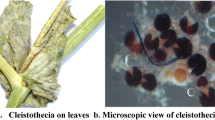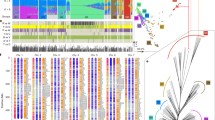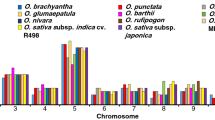Abstract
Sitophilus weevils are mainly pests of cereals, but some populations of S. oryzae are able to feed and breed on split peas. Genetical analyses and resistance tests were individually conducted by crossing individuals of a pea-resistant strain from China with those of a pea-susceptible strain from the laboratory (SFr). Adults from parental populations and progenies from F1 and F2 generations (two reciprocal crosses), as well as from backcrosses, were obtained on wheat and thereafter tested for their ability to survive on yellow split peas for 14 days. The expression of pea-resistance in S. oryzae is under simple Mendelian control implicating only one recessive and no sex-linked gene. Resistant populations able to develop on split peas are homozygous for the recessive gene, but some wild susceptible populations can contain heterozygous individuals at a very low frequency. The possible role of intracellular symbionts in pea detoxification was tested by comparing aposymbiotic and normally symbiotic populations. Symbionts were not directly required but might play a role in supplying disposable energy for the metabolism implicated in the detoxification of allelochemicals.
Similar content being viewed by others
Article PDF
References
Baker, J E, and Woo, S M. 1992. β-glucosidases in the rice weevil, Sitophilus oryzae: Purification, properties, and activity levels in wheat-and legume-feeding strains. Insect Biochem Mol Biol, 22, 495–504.
Bogracheva, T Y, Davydora, N I, Genin, Y U, and Hedley, C L. 1995. Mutant genes at the r and rb loci affect the structure and physico-chemical properties of pea seed starches. J Exp Bot, 46, 1905–1913.
Coombs, C W, Billings, C J, and Porter, J E. 1977. The effect of yellow split-peas (Pisum sativum L.) and other pulses on the productivity of certain strains of Sitophilus oryzae (L.) (Col. Curculionidae) and the ability of other strains to breed thereon. Stored Prod Res, 13, 53–58.
Cotton, R T. 1920. Tamarind pod-borer, Sitophilus linearis (Herbst.). J Agric Res, 20, 439–446.
Delobel, A, and Tran, M. 1993. In: Les Coléoptères des denrées alimentaires entreposées dans les régions chaudes, pp. 343–350. ORSTOM, Paris.
Delobel, B, and Grenier, A-M. 1993. Effect of non-cereal food on cereal weevils and tamarind pod weevil (Coleoptera: Curculionidae). Stored Prod Res, 29, 7–14.
Dowd, P F. 1989. In situ production of hydrolytic detoxifying enzymes by symbiotic yeasts in the cigarette beetle (Coleoptera: Anobiidae). Econ Entomol, 82, 396–400.
Dowd, P F. 1992. Insect fungal symbionts: a promising source of detoxifying enzymes. J Indust MicroBiol, 9, 149–161.
Febvay, G, and Rahbe, Y. 1991. ‘Toxicologic’, un programme pour l'analyse des courbes de mortalite par la methode des probits sur Macintosh. Cah Techn INRA, 27, 77–78.
Harbone, J B. 1982. Introduction to Ecological Biochemistry, 2nd edn. Academic Press, London.
Heddi, A, Lefebvre, F, and Nardon, P. 1993. Effect of endocytobiotic bacteria on mitochondrial enzymatic activities in the weevil Sitophilus oryzae (Coleoptera: Curculionidae). Insect Biochem Molec Biol, 23, 403–411.
Holloway, G J. 1986a. The potency and effect of Phytotoxins within yellow split-pea (Pisum sativum) and adzuki bean (Vigna angularis) on survival and reproductive potential of Sitophilus oryzae (L.) (Coleoptera: Curculionidae). Bull ent Res, 76, 287–295.
Holloway, G J. 1986b. A theoretical examination of the classical theory of inheritance of insecticide resistance and the genetics of time to knockdown and dry body weight in Sitophilus oryzae (L.) (Coleoptera: Curculionidae). Bull ent Res, 76, 661–670.
Holloway, G J, and Mackness, M I. 1988. The evolutionary adaptation of enzyme systems in Sitophilus oryzae fed on toxic legumes. Entomologia exp appl, 48, 165–172.
Holloway, G J, and Smith, R H. 1985. Inheritance of the ability of Sitophilus oryzae (L.) (Coleoptera: Curculionidae) to feed and breed on yellow split-pea (Pisum sativum). Bull ent Res, 75, 367–375.
Laviolette, P, and Nardon, P. 1963. Action des rayons gamma du cobalt 60 sur la mortalité et la fertilité des adultes d'un charançon du riz. Bull Biol Fr Belg, 97, 305–333.
Lloyd, J R, Wang, T L, and Hedley, C L. 1996. An analysis of seed development in Pisum sativum. 19. Effect of mutant alleles at the r and rb loci on starch grain size and on the content and composition of starch in developing pea seeds. J Exp Bot, 47, 171–180.
Nardon, P. 1971. Contribution à l'étude des symbiotes ovariens de Sitophilus sasakii: localisation, histochimie et ultrastructure chez la femelle adulte. C r Acad Sei D, 272, 2975–2978.
Nardon, P. 1973. Obtention d'une souche asymbiotique chez le charangon Sitophilus sasakii: différentes méthodes et comparaison avec la souche symbiotique d'origine. C r Acad Sei D, 277, 981–984.
Nardon, P, and Wicker, C. 1981. La symbiose chez le genre Sitophilus (Coleoptere, Curculionide). Principaux aspects morphologiques, physiologiques et génétiques. Ann Biol, 20, 327–373.
Pemberton, G W, and De Rodriguez, A. 1981. The occurrence of a strain of Sitophilus oryzae (L.) (Col. Curculionidae) breeding in Portuguese kibbled carobs. J Stored Prod Res, 17, 37–38.
Slansky, F, Jr. 1992. Allelochemical-nutrient interactions in herbivore nutritional ecology. In: Rosenthal, G. A. and Berenbaum, M. R. (eds) Herbivores: Their Interactions With Secondary Plant Metabolites, 11, Evolutionary and Ecological Processes, 2nd edn, pp. 135–174. Academic Press, New York.
Thind, B B, and Muggleton, J. 1981. Inheritance of the ability of strains of Sitophilus oryzae (L.) (Coleoptera: Curculionidae) to breed on split-pea (Pisum sativum). Bull ent Res, 71, 419–424.
Vayssière, M P. 1943. Le charançon du riz et les légumes sees. C r Acad Agr Fr, 29, 449–450.
Author information
Authors and Affiliations
Corresponding author
Rights and permissions
About this article
Cite this article
Grenier, AM., Mbaiguinam, M. & Delobel, B. Genetical analysis of the ability of the rice weevil Sitophilus oryzae (Coleoptera, Curculionidae) to breed on split peas. Heredity 79, 15–23 (1997). https://doi.org/10.1038/hdy.1997.118
Received:
Issue date:
DOI: https://doi.org/10.1038/hdy.1997.118



